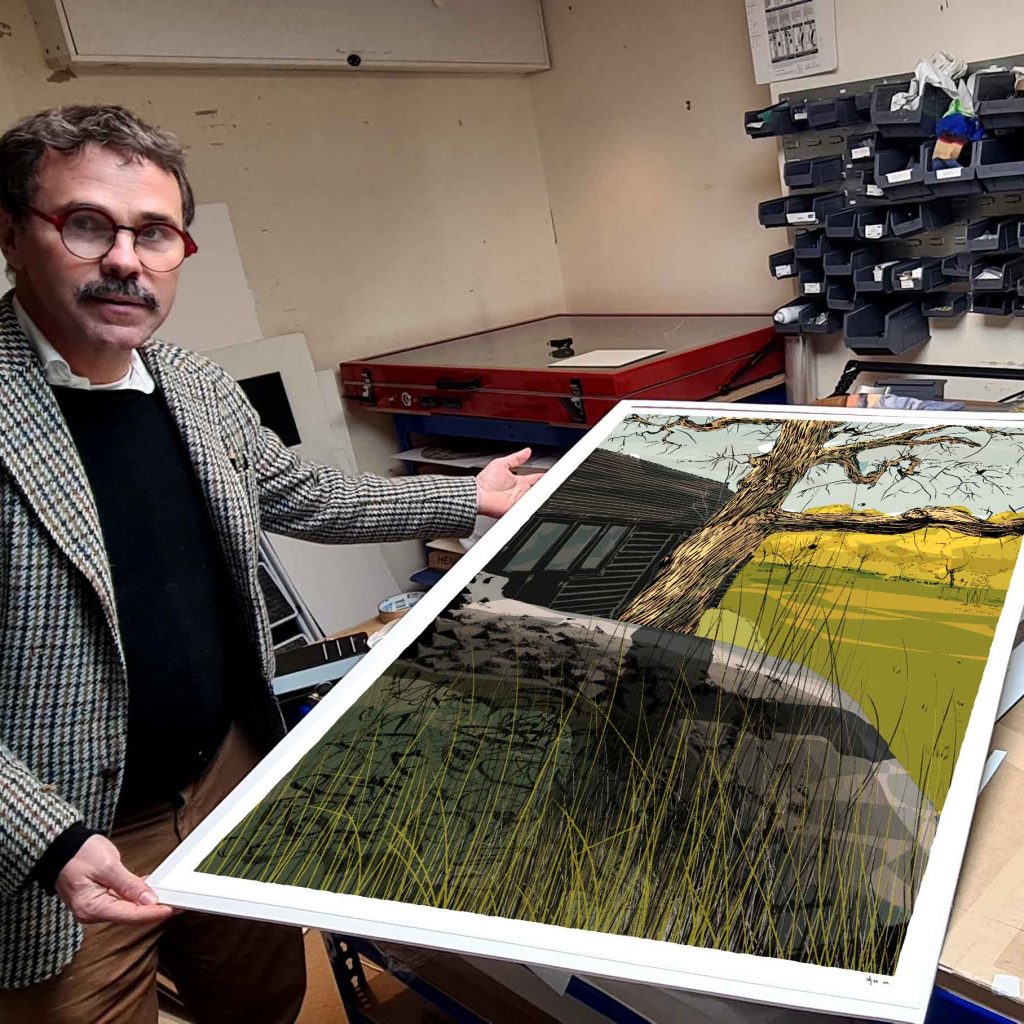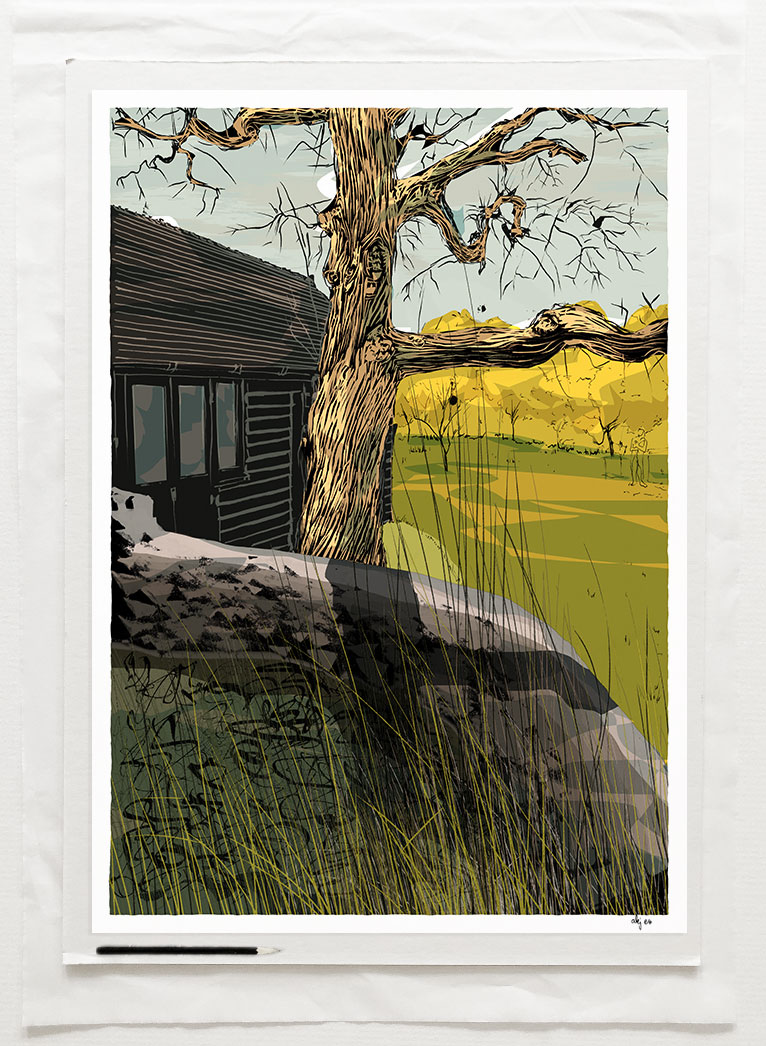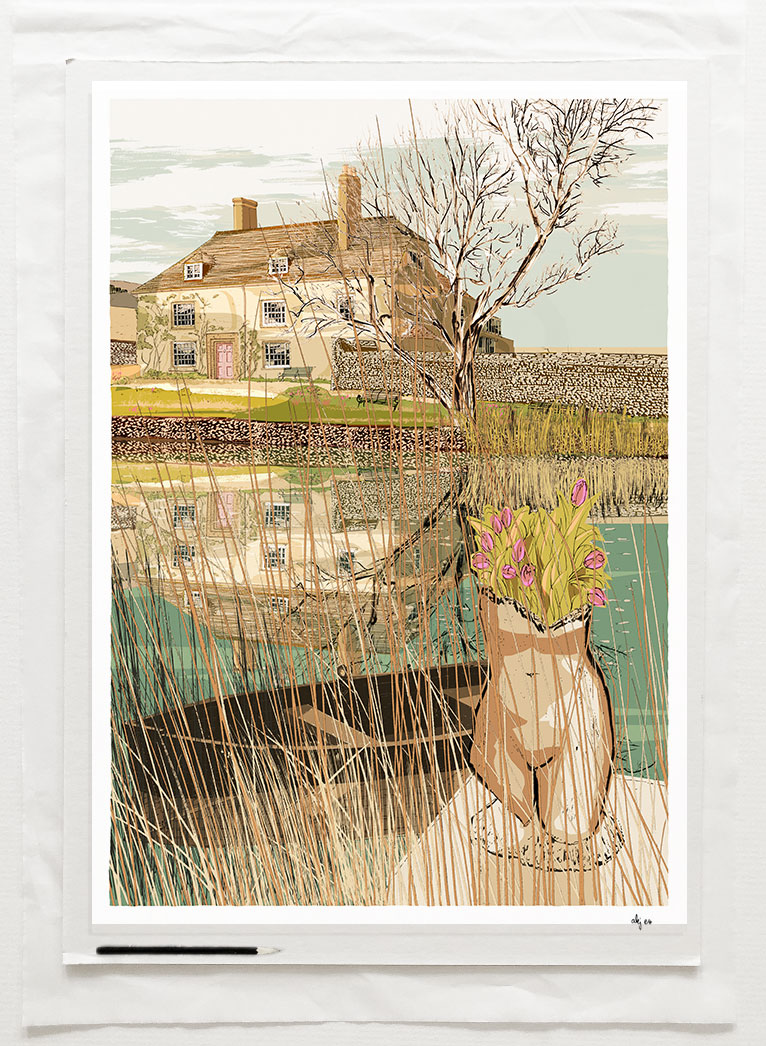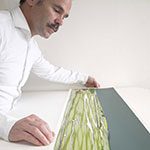“There is no gate, no lock, no bolt that you can set upon the freedom of my mind.”
Virginia Woolf, A Room of One’s Own
In autumn 202, I completed two new art prints that focused on two major cultural spots in the South east: Charleston Farmhouse and the writing lodge at Monk’s House. In this article I write about these two places and the people that made it known around the world.
Early in the 20th Century, Duncan Grant and Vanessa Bell, members of the Bloomsbury group, moved to Charleston Farmhouse. Set in East Sussex, Charleston Farmhouse is possibly the most loved historic artist residence in the UK. In addition, in the nearby village of Rodmell, Vanessa’s sister, Virginia Woolf, lived in Monk’s House. In its garden stands what is now called ‘the Writing Lodge’. There Virginia wrote many of her books and articles.
Charleston House. Duncan Grant, Vanessa Bell, The Bloomsbury Group
Charleston became the modernist home and studio of painters Vanessa Bell and Duncan Grant. Nestled in the South Downs National Park, the farmhouse is surrounded by a wonderful garden and in 2018 a new building expansion was completed to house an art gallery and services for visitors. Every year Charleston hosts the world famous Charleston Literary Festival that celebrates with a modernist twist artists, writers and thinkers.
I have visited Charleston on many occasions. Sometimes to enjoy open air theatre performances in the summer, a few times for the Festival to attend fascinating lectures and often to see the art exhibitions. But mainly I have visited Charleston to visit the house and the gardens which are a joy.

Monk’s House
Monk’s House is a 16th-century weather-boarded cottage in the village of Rodmell, three miles south of Lewes, East Sussex. The writer Virginia Woolf and her husband, the political activist, journalist and editor Leonard Woolf, bought the house on 1 July 1919. Whilst living there they hosted many visitors often connected to the Bloomsbury Group, including T. S. Eliot, E. M. Forster, Roger Fry and Lytton Strachey.
Virginia Woolf
Adeline Virginia Woolf was born on 25 January 1882. She is considered one of the most important modernist 20th-century authors and a pioneer in the use of stream of consciousness as a narrative device.
‘A Room of One’s Own’ by Virginia Woolf
In Spring 2020 I read Virginia Woolf’s ‘A Room of One’s Own’. And in Spring 2021 I visited her very own room, the writing lodge at Monk’s House. Monk’s House, now owned by the National Trust, was closed on the day of my visit, but from the Church of St. Peter you can enjoy the view of the lodge with this extraordinary tree. I saw this tree like the creative spirit of Virginia. It is a listed tree and has a plaque on its bark, though I don’t know anything more about it. We sat on the flint wall that separates the church and Monk’s House for a long time on an early spring day when life was starting to wake up after the winter.
‘A Room of One’s Own’ by Virginia Woolf, is an extraordinary feminist essay first published in September 1929, which still resonates with our times. Virginia Woolf wrote most of her major works in her writing lodge in the garden of Monk’s House. With the tranquility of the Sussex Downs through the window and the garden surrounding her, it was the perfect place to write.
That year around the time of reading this book I visited three art exhibitions celebrating women’s work. At Brighton Museum I saw ‘100 First Women Portraits‘ celebrating 100 pioneering women of the 21st century by photographer Anita Corbin. Then at Pallant house Gallery I saw an exhibition by pop artist Jann Haworth named ‘Close Up’ that among other works displayed a mural called ‘Work in Progress’ which is a 28ft mural result of a collaborative community project and celebrates women who were catalysts for change in the arts, sciences and social activism. Featuring over 100 women spanning over 3000 years. Finally in Malaga I saw ‘Saints, queens and workers. The image of women in Russian art’ at the Russian Art Museum in Malaga. It presented a panorama of images of women, created by Russian artists over the course of several centuries.
In the summer of 2021 after numerous visits to both places I created these two new are prints that somehow summarizes my experiences and research about these places and their dwellers:
‘Virginia Woolf’s Writing Lodge at Monk’s House.’
Set within the South Downs National Park, Monk’s House is in the village of Rodmell. My art print shows Virginia Woolf’s writing lodge viewed from the grounds of the Church of St Peter where a low flint wall separates the two properties.
‘The Pond at Charleston House Bloomsbury.’
The art legacy of the Bloomsbury Group and the beauty of the farmhouse inspired me to create this art print. I chose a view across the pond and on an early spring day, when the trees are still bare, you can feel the awakening of the new season.
-
 The Writing Lodge of Virginia Woolf at Monk’s House£40.00 – £310.00
The Writing Lodge of Virginia Woolf at Monk’s House£40.00 – £310.00 -
 The Pond at Charleston House Bloomsbury£40.00 – £180.00
The Pond at Charleston House Bloomsbury£40.00 – £180.00
